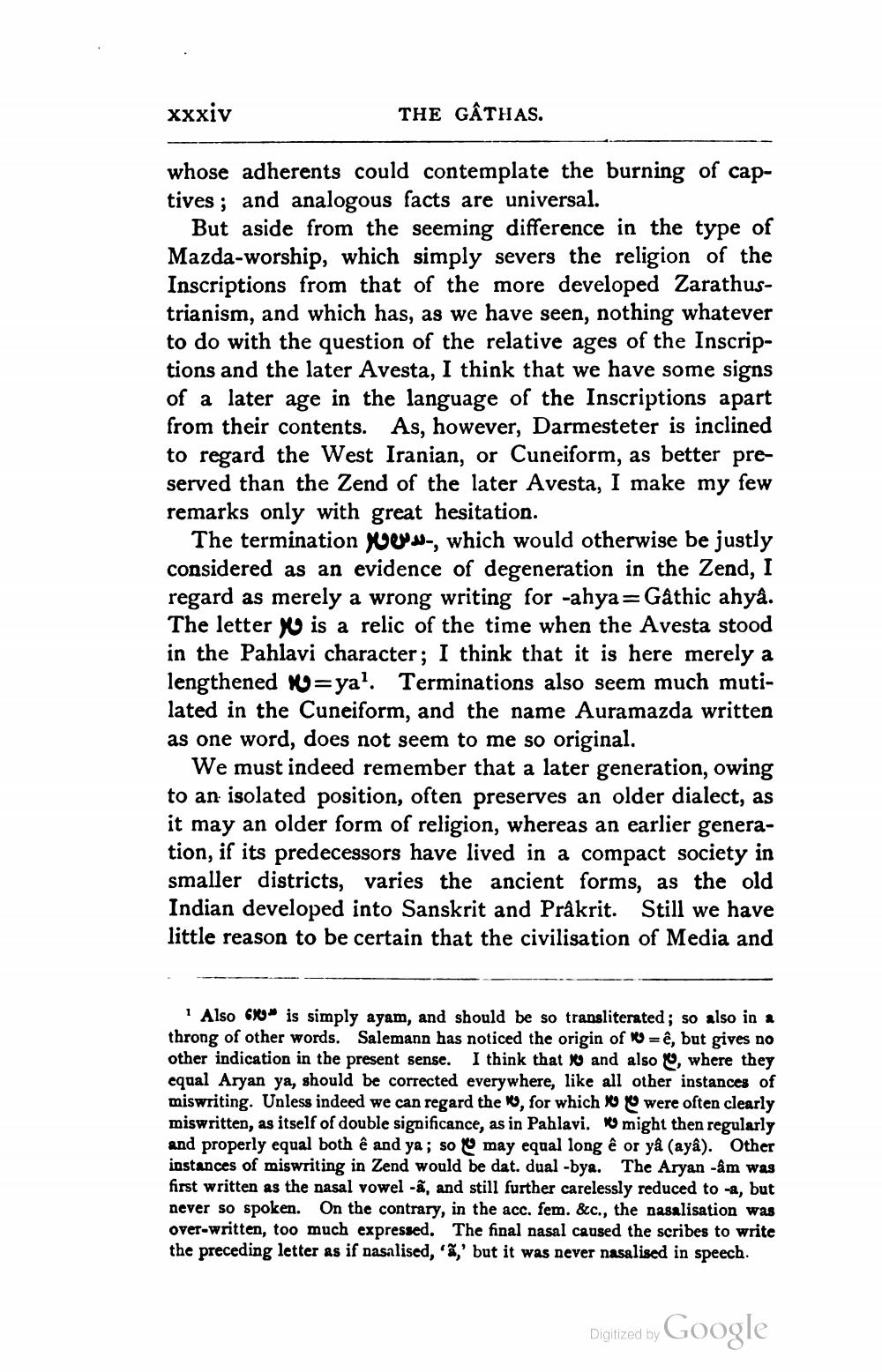________________
xxxiv
THE GÂTHAS.
whose adherents could contemplate the burning of captives; and analogous facts are universal.
But aside from the seeming difference in the type of Mazda-worship, which simply severs the religion of the Inscriptions from that of the more developed Zarathustrianism, and which has, as we have seen, nothing whatever to do with the question of the relative ages of the Inscriptions and the later Avesta, I think that we have some signs of a later age in the language of the Inscriptions apart from their contents. As, however, Darmesteter is inclined to regard the West Iranian, or Cuneiform, as better preserved than the Zend of the later Avesta, I make my few remarks only with great hesitation.
The termination Yeww-, which would otherwise be justly considered as an evidence of degeneration in the Zend, I regard as merely a wrong writing for -ahya=Gathic ahya. The letter is a relic of the time when the Avesta stood in the Pahlavi character; I think that it is here merely a lengthened Ng=ya? Terminations also seem much mutilated in the Cuneiform, and the name Auramazda written as one word, does not seem to me so original.
We must indeed remember that a later generation, owing to an isolated position, often preserves an older dialect, as it may an older form of religion, whereas an earlier generation, if its predecessors have lived in a compact society in smaller districts, varies the ancient forms, as the old Indian developed into Sanskrit and Prakrit. Still we have little reason to be certain that the civilisation of Media and
Also 680 is simply ayam, and should be so transliterated; so also in a throng of other words. Salemann has noticed the origin of K = ê, but gives no other indication in the present sense. I think that X and also , where they equal Aryan ya, should be corrected everywhere, like all other instances of miswriting. Unless indeed we can regard the , for which you were often clearly miswritten, as itself of double significance, as in Pahlavi. Ny might then regularly and properly equal both ê and ya ; sou may equal long ê or yâ (aya). Other instances of miswriting in Zend would be dat. dual-bya. The Aryan -am was first written as the nasal vowel -ã, and still further carelessly reduced to a, but never so spoken. On the contrary, in the acc. fem. &c., the nasalisation was over-written, too much expressed. The final nasal caused the scribes to write the preceding letter as if nasalised, '' but it was never nasalised in speech.
Digitized by Google




